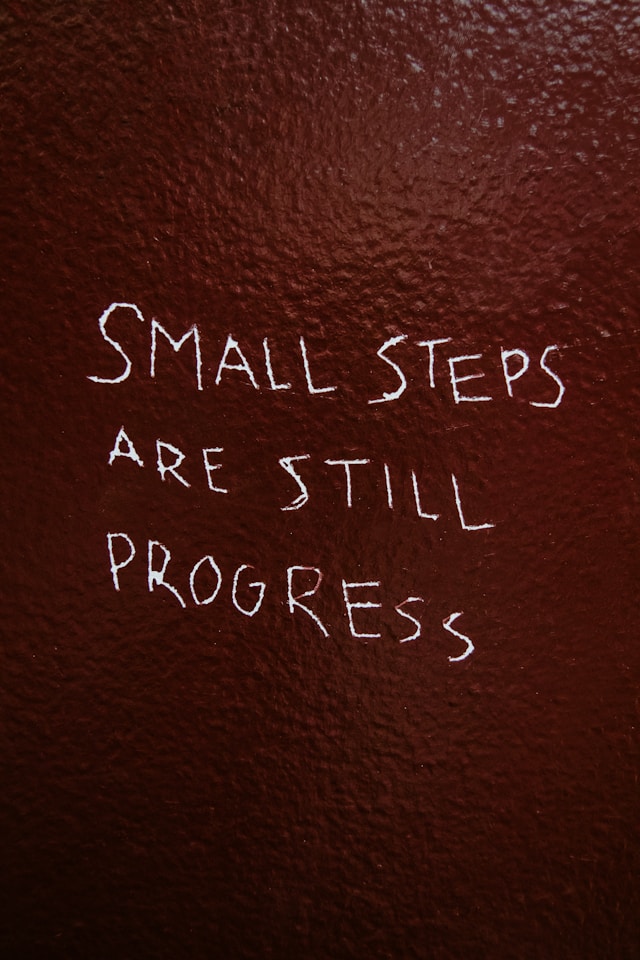Is having an ego good or bad? It’s a simple question with a complicated answer.
The ego gets a bad rap — think arrogance, selfishness or the need to dominate. But ego isn’t inherently bad. Like most things, it depends on how it’s used and managed.
Ego is part of your identity. It drives ambition, fuels confidence and helps you assert yourself. But it can also distort reality, block growth and hurt relationships if left unchecked.
Let’s unpack what ego really is, where it helps, where it hurts and how to keep it in balance so it serves you instead of running the show.
Confidence in your abilities to go after your goals can sometimes be difficult to find or keep.
It can sometimes take time to discover the confidence you have inside you. This can be especially true if you are trying something new.
I have a program that can help you to discover what is holding you back from achieving your goals as well as help you set an attainable goal related to where you are in your life and where you are trying to be.
This program also works with you to build up your confidence in being able to reach your goal.
You can find out more about this program at Confidology, a funny name but a serious program.
You can contact me to talk about this or any other aspect of confidence and success at michael@coachmichaelw.com
Visit the site and read through the program description.
If you are not ready to commit to a full program, I have a self-paced course on Udemy that may be of interest. You can find out about the course and register at Confidence and Motivation Development and Maintenance
What Is Ego, Really?
At its core, your ego is your self-image — how you see yourself and how you want others to see you. It’s tied to your sense of worth, your identity and your desire to feel important or validated.
Everyone has an ego. It’s what makes you push for that promotion, speak up in a meeting or take pride in a job well done. But when ego becomes inflated or fragile, problems arise.
When Ego Works in Your Favour
Let’s start with the upside. A healthy, confident ego can be a powerful tool for achievement and resilience. Here’s how:
1. Ego Can Drive Big Success
People with strong egos often set massive goals and go after them hard. They want to prove something — to themselves and the world. That kind of internal fire has fuelled world leaders, CEOs, athletes and entrepreneurs.
When you believe you’re capable of extraordinary things, you’re more likely to pursue them. Ego can help you push through resistance, rise above competition and demand more from yourself.
2. Ego Helps Overcome Obstacles
A big ego can convince you that you’re unstoppable. It may sound delusional, but in tough situations, that mindset can actually be helpful. If you believe in your ability to power through, you’re less likely to give up when things get hard.
Confidence — even if slightly inflated — can be a serious asset when you’re under pressure.
3. Ego Supports Self-Belief
Confidence is often rooted in ego. You need some belief in yourself to step up, take risks and assert your value. If your ego is reasonably healthy, it acts like a built-in support system: “I can do this. I’ve got what it takes.”
This can help you perform better, handle criticism more constructively, and stay grounded in your goals.
The Dark Side of Ego
Of course, ego can also derail you. When it becomes too big or too fragile, it starts working against you.
1. Craving External Validation
Some egos feed entirely on other people’s opinions. If you’re obsessed with being liked, praised or admired, your ego will never be satisfied. It turns into a bottomless pit of need.
The problem? You’re outsourcing your self-worth. You chase approval instead of doing what’s right for you. And when the praise stops, your confidence crashes.
2. Never Feeling Fulfilled
The ego always wants more. More attention. More power. More followers. More wins. No matter what you accomplish, it’s not enough. This leads to chronic dissatisfaction — even when you’re objectively successful.
If you tie your happiness to feeding your ego, you’ll always feel like something’s missing.
3. Hurting Relationships
When ego takes over, people become tools to serve your goals instead of individuals to connect with. You stop listening, stop empathizing and start dominating.
This can damage friendships, romantic relationships and workplace dynamics. People avoid egotistical individuals because they feel used, unseen or disrespected.
4. Blinding You to Reality
A bloated ego distorts your view of yourself and the world. You stop recognizing your weaknesses or mistakes. Feedback feels like an attack, and you dismiss anything that doesn’t confirm your greatness.
This not only stalls growth — it sets you up for big crashes when reality doesn’t match your inflated self-image.
5. Avoiding Failure at All Costs
Ironically, the ego that believes it’s untouchable is often terrified of failure. Because failure feels like ego death. It threatens the image you’ve built of yourself.
This fear can hold you back from trying new things, taking risks or admitting when you’re struggling. You play it safe to protect your ego — at the cost of growth.
Signs Your Ego Might Be Running the Show
- You take things personally — even small critiques.
- You constantly compare yourself to others.
- You feel threatened by other people’s success.
- You have to “win” every conversation or argument.
- You need recognition to feel valuable.
- You resist asking for help, even when you need it.
These are indicators that your ego might be taking up too much space in your head — and getting in the way of your well-being.
The Middle Path: Confident, Not Conceited
The goal isn’t to destroy your ego. You need it. But you need it in balance.
A healthy ego looks like this:
- You believe in your abilities — but stay open to learning.
- You take pride in your work — but don’t need constant validation.
- You’re confident — but don’t need to prove your worth.
- You know your value — but still value others.
This kind of ego leads to quiet confidence, resilience and inner peace.
How to Keep Your Ego in Check
1. Practice Self-Awareness
Catch yourself in ego-driven behaviour. Are you arguing to be right, or to be helpful? Are you chasing status, or purpose? Are you being honest, or protecting your image?
Reflect often and get curious about your motives.
2. Take Feedback Seriously, Not Personally
Feedback isn’t an attack — it’s a tool. Use it. Even if it stings, look for the truth in it and grow from it. Your ego doesn’t like discomfort, but your future self will thank you for facing it.
3. Learn from Failure
Don’t let your ego avoid failure. Let it learn from it. Failure doesn’t mean you’re not good enough. It means you’re human, trying and learning. Keep going.
4. Celebrate Wins Without Overinflating
Enjoy your accomplishments. Own your success. But don’t let them define you. You are more than your wins. Celebrate, then keep it moving.
5. Serve, Don’t Just Shine
True confidence isn’t about standing above others — it’s about lifting others up. Use your strengths to help, not just to shine. This keeps your ego grounded in purpose.
Final Thought
Your ego is not your enemy. It’s a tool — and like any tool, it can help or hurt, depending on how you use it.
A healthy ego gives you strength, clarity and drive. An unchecked ego creates blind spots, insecurity and isolation.
The key is balance. Be proud, but stay humble. Be confident, but stay open. Let your ego push you to grow — but don’t let it make the world all about you.
Your best self isn’t ego-less. It’s ego-aware. And that awareness is what turns potential into real power.
To talk about any aspect of success or working with a Life Coach to help you to achieve success, you can book a 30-minute call by clicking on the blue button below.
Don’t try to do all of this by yourself, ask and receive the guidance that can get you moving towards your own success.
Working together can help you overcome personal and professional barriers, ensuring you reach your highest potential.
Nothing happens until action is taken.
To your success.
Michael
P.S Don’t forget to visit Confidology to learn more about the program. If you are not ready to commit to a full program, I have a self-paced course on Udemy that may be of interest. You can find out about the course and register at Confidence and Motivation Development and Maintenance
P.P.S if you want to find out more about my programs just check out the site Confidence and Life Coaching
P.P.P.S. If you enjoy reading these articles on my blog, I have more books that have more of this type of information that you can find out more about at Books to Read. You can buy these ebooks at many on-line book stores. The links to the bookstores are at the link above.
Photo by Shutter Speed on Unsplash






